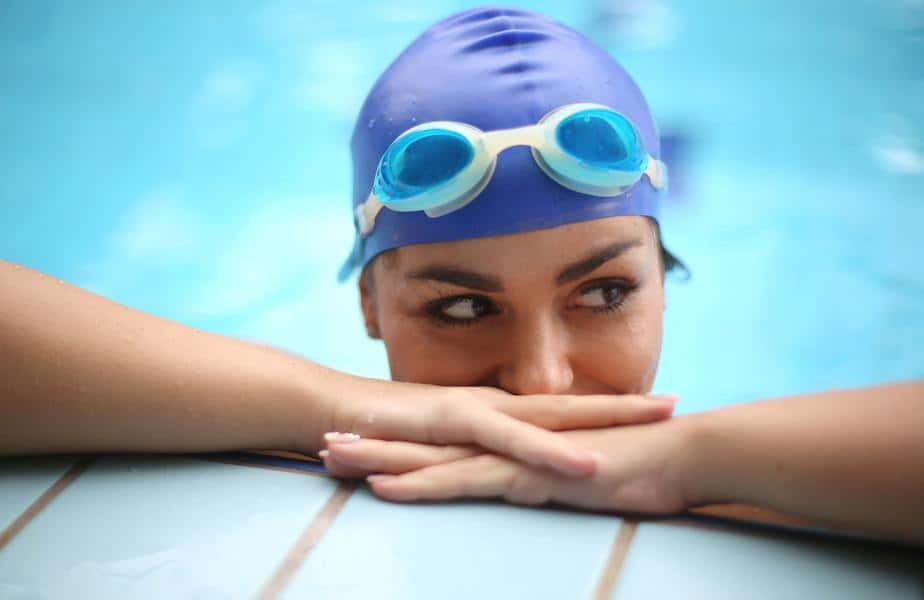Chlorine is a common chemical found in swimming pools, used to kill bacteria and keep the water sanitized. However, it’s essential to consider how this chemical affects our hair. Many people frequently ask, does chlorine damage your hair? In this article, we will dive into this topic and explore the truth behind chlorine’s impact on hair health.
Unfortunately, chlorine can cause a variety of hair issues including color changes, weakening of hair strands, and even split ends. These concerns can arise from the chemical reactions that occur between chlorine and hair fibers, which can damage your hair. To ensure healthy hair while enjoying swimming activities, you need to know how to protect and care for your hair against chlorine damage.
How Chlorine Affects Your Hair and Scalp
Chemical Reactions
Chlorine can cause various chemical reactions in your hair, leading to changes in its natural color and texture. It can weaken each hair strand and cause split ends. Additionally, the oils removed from the skin by chlorine can leave your skin red and irritated, depending on your skin’s sensitivity.
Changes in Hair Structure
Exposure to large amounts of chlorine can damage the hair shaft’s structure, making it weaker. According to board-certified dermatologist Dr. Marnie B. Nussbaum, the chemicals in chlorine strip the natural oils from your hair and scalp, negatively impacting the hair’s cuticle and protein, called keratin.
This damage to the hair’s cuticle and keratin can lead to frizziness, dryness, and a straw-like texture. You ought to take steps to protect your hair from chlorine by using techniques such as rinsing your hair with tap water before swimming or wearing a swim cap in the pool.
Inflamed or Itchy Scalp
Another side effect of having the oils stripped from your hair and scalp is that your scalp can become dry, irritated, and prone to inflammation.
In addition, chlorine can also cause an allergic reaction in some people. This is known as chlorine sensitivity or chlorine allergy. Symptoms of a chlorine allergy can include redness, itching, and swelling of the skin, as well as hives, rashes, and even difficulty breathing in severe cases.
To make matters worse, if you spend a lot of time in a chlorinated pool or hot tub, the chlorine can build up on your scalp and hair, exacerbating the irritation and inflammation. This can lead to conditions like dandruff or seborrheic dermatitis, which can cause itching, flaking, and redness on the scalp.
Common Signs Your Hair Is Damaged
Dryness and Brittleness
One sign of chlorine damage to your hair is increased dryness and brittleness. Swimming in chlorinated water can strip your hair of its natural oils, causing it to become dry, dull, and lifeless. You may find your hair looking and feeling noticeably rough and brittle, and it may be more prone to tangles or knots, even if it had a smooth texture before.
Color Fading
Color fading is another common indicator of chlorine damage. Chlorine can cause both natural and dyed hair colors to lose their vibrancy and fade more quickly than usual. This occurs because chlorine can oxidize the hair shaft, which breaks down the pigments in your hair, leading to a loss of color over time.
Split Ends and Breakage
Split ends and breakage can be a direct result of chlorine exposure as well. Due to the dryness and brittleness caused by chlorine, your hair becomes more prone to damage. This damage can manifest in the form of split ends and breakage. Additionally, because chlorine can weaken the hair shaft structure, it can even get damaged with gentle brushing or styling.
Loss of Shine and Frizziness
Furthermore, when the hair cuticle is damaged, it can no longer reflect light as effectively as it normally would and can make your hair look rough and frizzy. This is why chlorine-damaged hair often appears dull and lacks shine. The damage also makes it harder for your hair to retain moisture, which can further exacerbate the dullness and dryness.
While experiencing these signs of chlorine damage can be discouraging, there are preventative measures and treatments you can use to protect and repair your hair. Taking care of your hair before and after swimming can make a significant difference in maintaining its health and luster.
How to Prevent Chlorine Build Up in Hair
Pre-Swim Protection
Before diving into the pool, protect your hair from chlorine by thoroughly rinsing and wetting it with clean water. This simple step helps in reducing chlorine absorption, as the hair fibers are already saturated with water.
You can also apply natural oils such as coconut oil or olive oil to your hair to create an additional barrier against chlorine. Wearing a swim cap is another effective method to further shield your hair from the damaging effects of pool water.
Wear a Swim Cap

Wearing a swim cap can drastically limit how much chlorinated water your hair is exposed to. It can also provide additional protection against the sun’s UV rays, which can also damage your hair in a similar way.
Not to mention a plethora of other benefits such as streamlining your head shape for faster swimming speeds, keeping long hair out of your way, and keeping the goggle strap from digging into your skin. Swim caps are pretty useful, don’t you think?
Rinse and Wash after Swimming
As soon as you finish swimming, it’s essential to rinse your hair with clean water immediately. This helps in removing most of the chlorine from your hair before it starts causing damage.
After rinsing, use a swimmers’ shampoo or clarifying shampoo to remove chlorine to thoroughly cleanse your hair. Condition your hair with a hydrating conditioner to replenish moisture and keep your hair strands healthy and strong.
With these preventative measures, you can enjoy swimming without worrying about damaging your hair due to chlorine exposure. Just remember to consistently practice these tips for optimum hair protection.
Repairing Chlorine Damaged Hair
Chlorine can leave your hair feeling dry, tangled and looking dull. Luckily, there are several ways to repair damaged hair and restore its natural shine and softness. In this section, we’ll explore deep conditioning treatments, hair masks, and remedies you can try at home to bring life back to your tresses.
Deep Conditioning Treatments

One effective way to repair chlorine-damaged hair is to use deep conditioning treatments. These products can help replenish your hair’s moisture, keep it soft and minimize frizz.
After shampooing, apply the deep conditioner to your hair, focusing on the ends where damage is often more severe. Leave the treatment on for the recommended time, then rinse thoroughly. It may be helpful to use deep conditioning treatments once or twice a week for optimal results.
Don’t forget to choose a conditioner specifically designed for treating chlorine-damaged hair, as these usually contain ingredients meant to target the damage caused by pool chemicals.
Hair Masks and Remedies
Another method to repair chlorine-damaged hair is applying hair masks and using natural remedies. These treatments can help provide your hair with needed nutrients and hydration. A few options you might consider include:
- Apple cider vinegar: A mixture of apple cider vinegar and water can help remove chlorine buildup and restore your hair’s natural pH balance. Combine equal parts vinegar and water, then rinse your hair with this solution after shampooing. Leave it on for a few minutes, and then rinse with cold water.
- Coconut oil: Coconut oil is known for its hydrating and nourishing properties. Warm a small amount of coconut oil in your hands and apply it to your hair, concentrating on the ends. Wrap your hair in a towel and leave the oil on for at least 30 minutes or overnight before washing it out with a mild shampoo.
- DIY hair masks: Create your own nourishing hair mask using ingredients like avocado, banana, honey, and egg yolks. These ingredients can help moisturize and strengthen your hair. Mix the ingredients until smooth, apply to your hair, and leave on for 20-30 minutes before rinsing.
By incorporating deep conditioning treatments, hair masks, and natural remedies into your hair care routine, you can help repair your hair after exposure to chlorine and maintain its health, softness, and shine.
Frequently Asked Questions
Why Does Chlorine Make My Hair Curly?
When your hair becomes dry after having its oils stripped, it can become more prone to breakage and split ends, which can cause it to curl or frizz.
Additionally, the chlorine in pools can cause a chemical reaction with the proteins in your hair, which can alter the structure of your hair and make it more curly or wavy. This effect may be more noticeable in individuals who already have naturally curly or wavy hair.
Does Chlorine Make Your Hair Grow Faster?
There is no evidence to suggest that chlorine makes your hair grow faster. In fact, as we have seen earlier, chlorine can actually damage your hair if you don’t take steps to rinse it off.
Can Chlorine Cause Hair Loss?
I could not find any scientific evidence supporting or disproving that chlorine causes hair loss in humans. A study that is commonly cited as evidence that chlorine doesn’t cause hair loss doesn’t seem to talk about hair loss at all, but rather about hair discoloration.
I think this misinformation originally started from a New York Times article written in 2007 and then parroted as the truth for years without anybody actually checking what the study was talking about.
Another study found that chlorine can cause hair loss in mice. But we are not mice, are we?
For now, I’m going to take the stance that while chlorine causes hair damage, it doesn’t cause hair loss, otherwise all swimmers would be going bald.
Some swimmers intentionally shave their head to make themselves more hydrodynamic. In the case of men, many of them were going to go bald anyways.
Also, if you take off your swim cap and notice a lot of hair in it – those are just strands of hair that you would have shed naturally. A swim cap just keeps them in place – you are not necessarily losing the hair because of chlorine exposure.
How Long Does It Take for Chlorine to Damage Hair?
The amount of time it takes for chlorine to damage hair can vary depending on a number of factors, including the frequency and duration of exposure, the condition of the hair, and the level of chlorine in the water.
In general, regular exposure to chlorinated water can cause damage to hair over time. This damage can manifest as dryness, brittleness, split ends, and discoloration. The longer the exposure and the higher the concentration of chlorine, the more severe the damage is likely to be.
Some people find these symptoms happening to them as quickly as a few days if they are swimming frequently and not taking good care of their hair.

